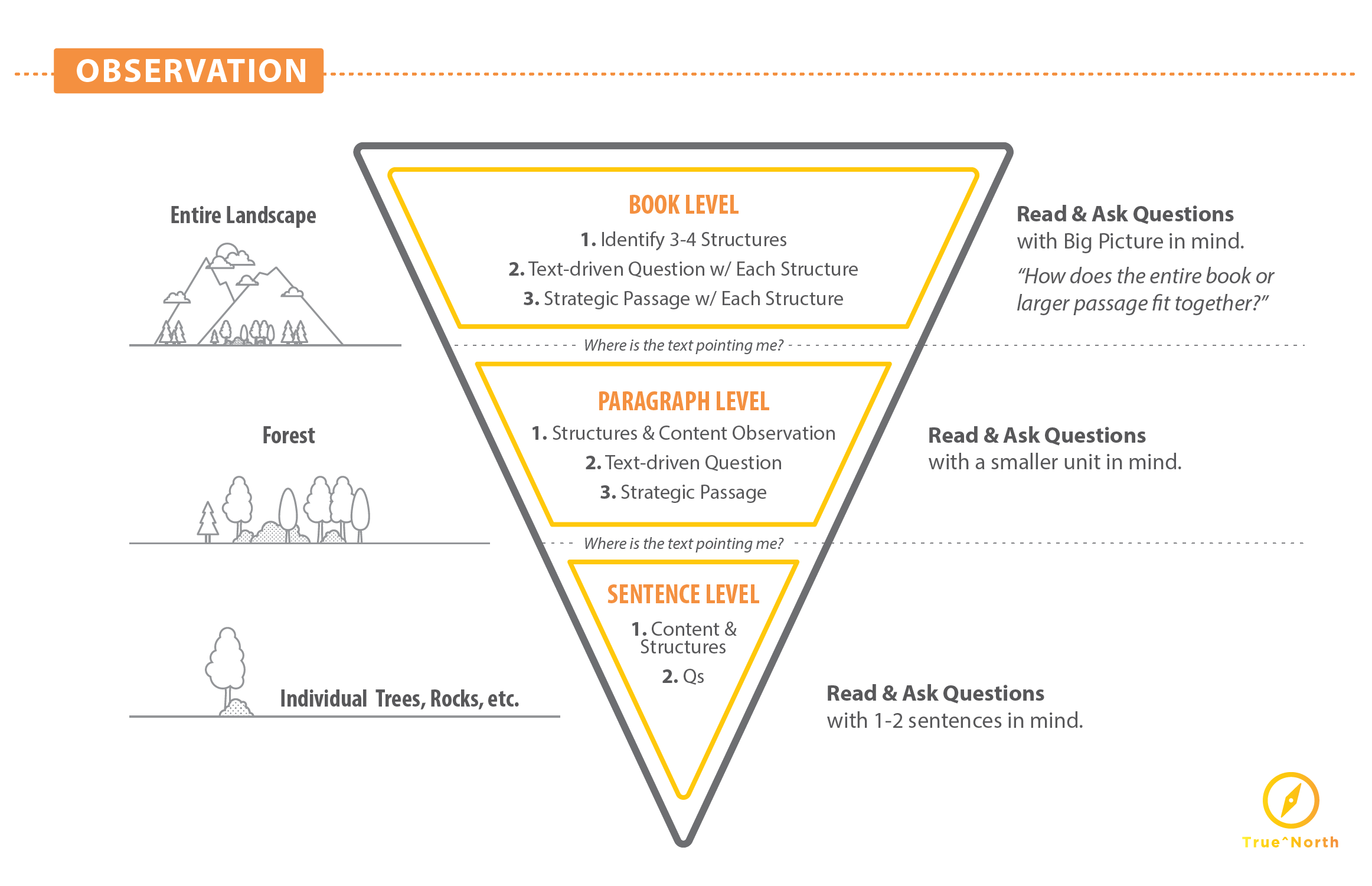


Finally, here is the Sentence level Observational assignment. Before we dig in, may we take a few minutes for a brief overview of the entire Observational process. (Yes, this will be a repeat...all for the sake of grasping how all the parts of True^North fit together). Take a look at the inverted pyramid which depicts the Three (3) Steps of Observation.
Now, we always begin Observation with a Book level survey from which we identify 3-4 structures which hold the entire book together. Additionally, each Book level structure has its own corresponding text-driven question and also will point us to a strategic passage. It will be this strategic passage that serves as input to our Paragraph level observation. Thus, we are simply following the trail-path-trajectory which the writer Mark has laid out for us.
Now, out of your Paragraph level work, especially the logic or the structure of the paragraph, a sentence or two will arise upon which you will focus much of your sentence level observation. Sometimes this sentence level work may be referred to as “detailed observation.” Remember, Book Level = examining an entire landscape. Paragraph Level = observing the forest. Sentence Level = examining individual trees and rocks. Please look to the True^North handout (page 6) for the variety of items which make up detailed observation: Content (who, what, where), words, connectives (therefore, but, so that), grammar (verbs, nouns, adjectives, pronouns). Thus, Observation as a whole always works from larger content to lessor…from Book to Paragraph to Sentence. Now, on to Sentence level detailed observation.
Here is another video to help you with the Sentence level work. The entire video is another summary of Observation to help remind you of what we have talked about several times. But repetition is a wonderful teacher. But if you fast forward to 16:30, you will find the material specifically focused on Sentence level work.
I have included the “Detailed Observation” worksheet in the Resource material for this Module. Now, slowly move through your one or two sentences (you can identify them as verses). Yes, slowly (have I said “slowly" enough) move word by word or phrase by phrase, making a range of observations (find the types of observations in page 6 or your True^North handout). Next, reshape your observation into the form of a question in the column next to your observation. Finally, you may be able to make a possible inference into the answer to your question. YES, this can seem tedious. But it is the best way to keep focused on the sentence(s) and not to bring yourself into the conversation. OBSERVATION is about “What the text says.” Keep focused on the details of the sentence and report it on the form. If you want to do this by hand, that is just fine. If you prefer to do this electronically, wonderful.
Once you are done (and it will take several pages, see my sample on Mark 9), can you now take a few minutes and reflect upon your work? You may comment on the form of the work. Or possibly how the samples included things that you might have missed. For example, did you miss some “structural observations?” Maybe you went too fast past the content material of who, what, where, etc? Did you highlight words that should be studied? What about important connectives that link the material together? In this case, self-assessment is one of the best tools to improve. This would be a perfect place to double check against the Observation Grading Rubric to have in one place a checklist for all the essential parts.